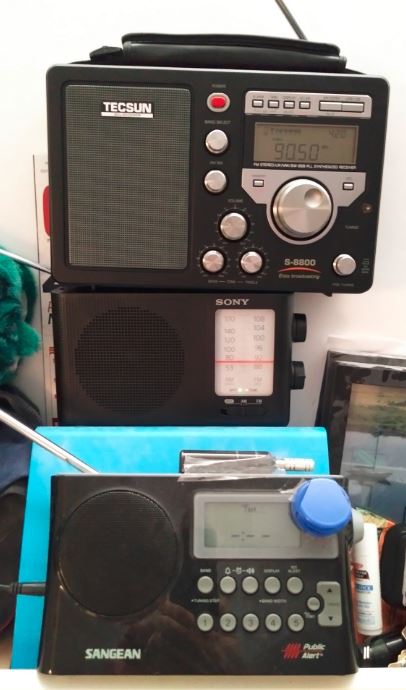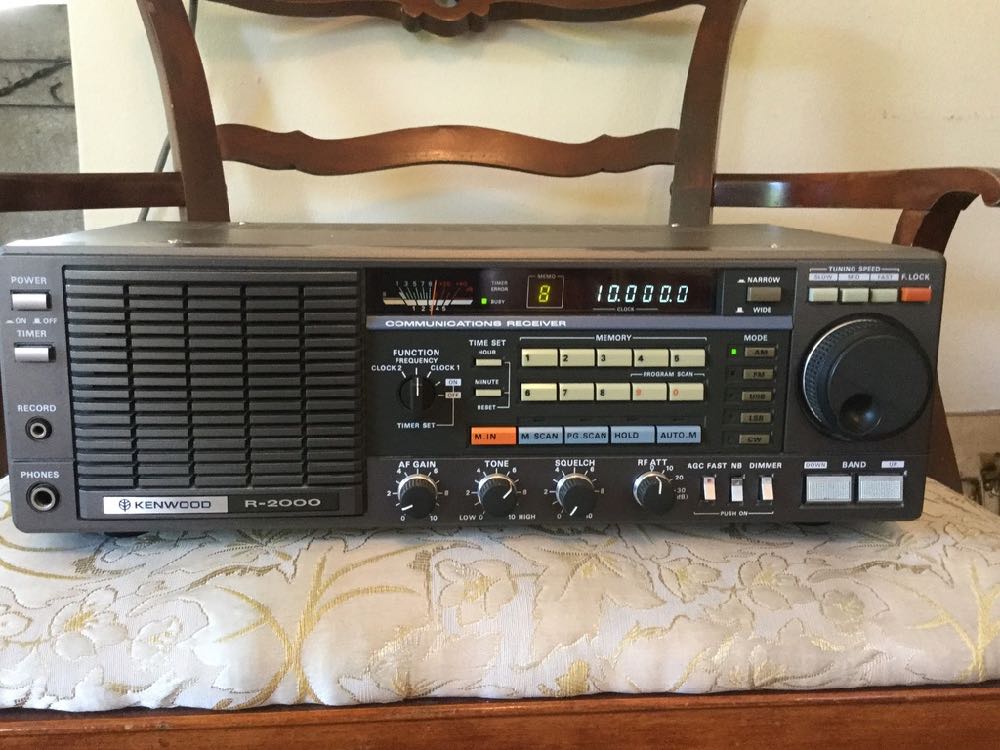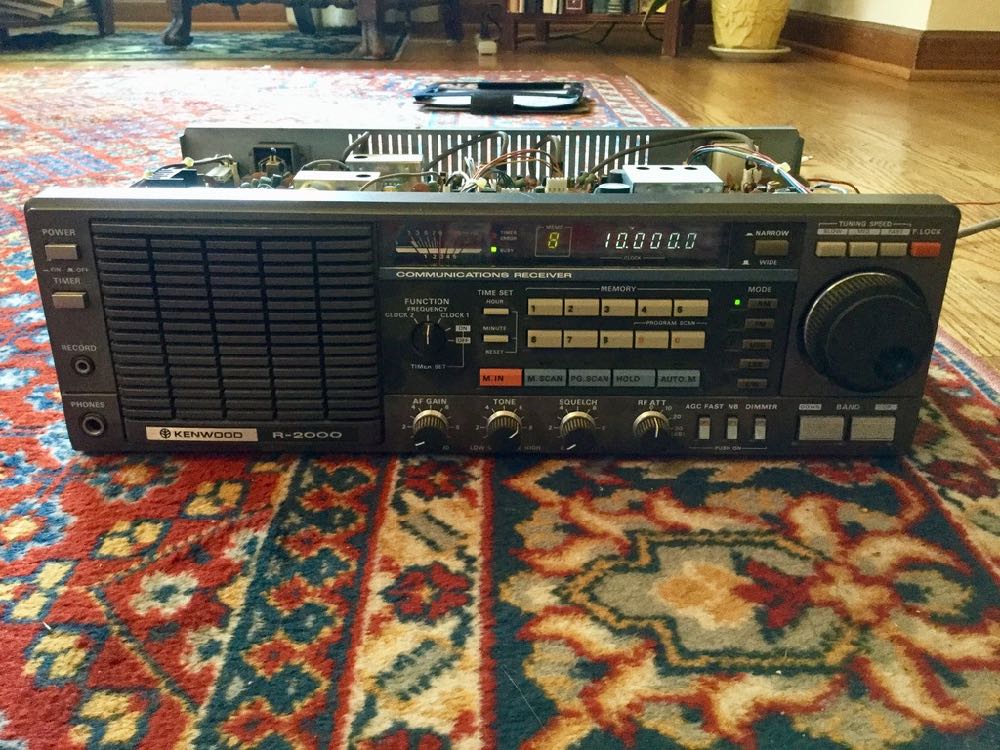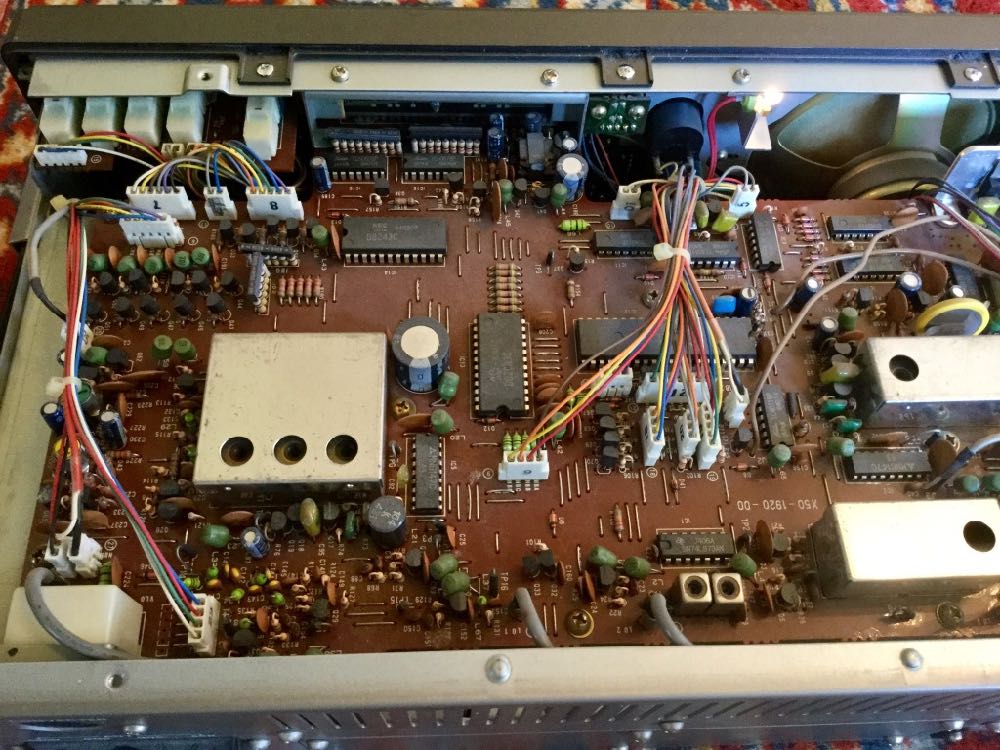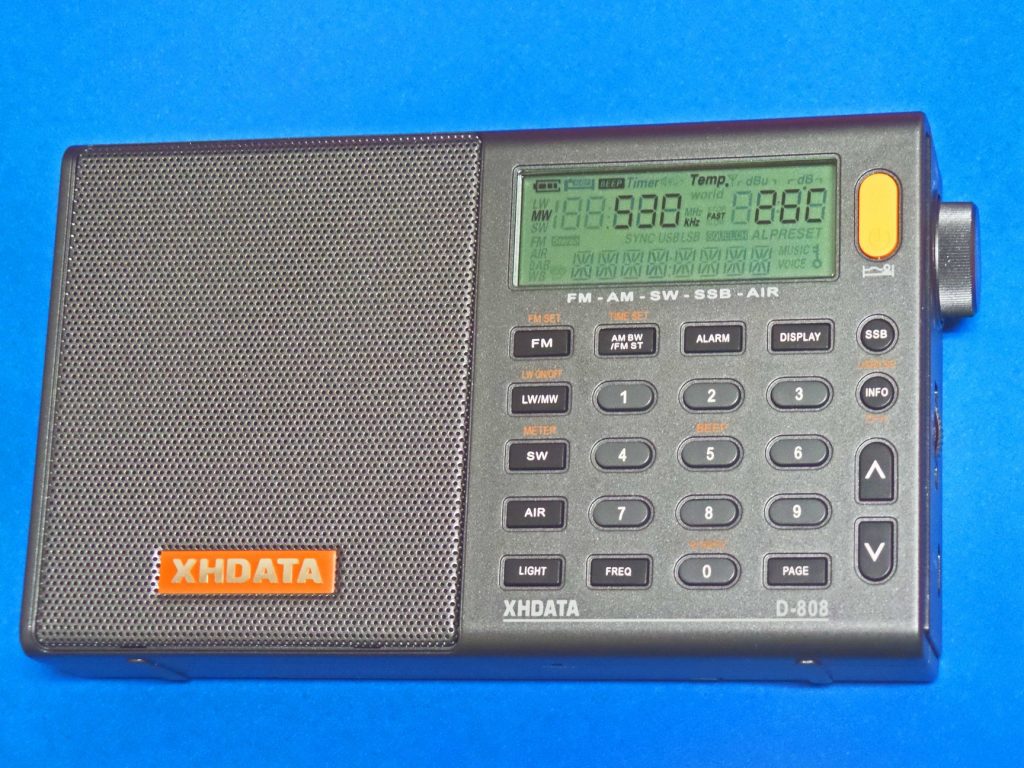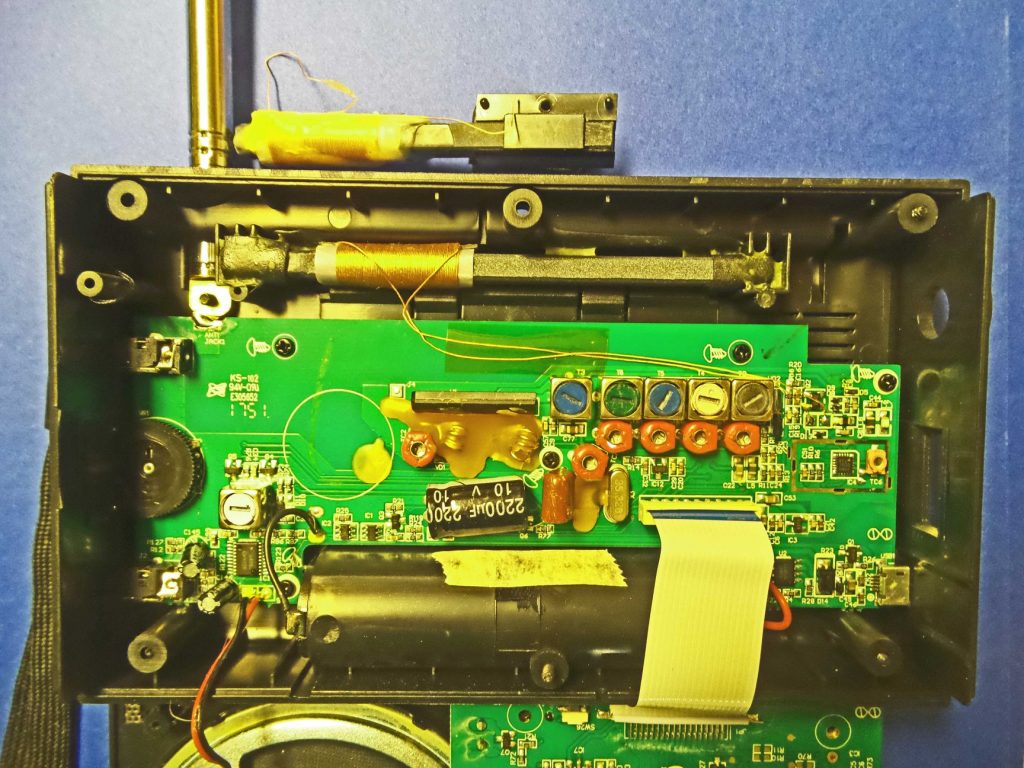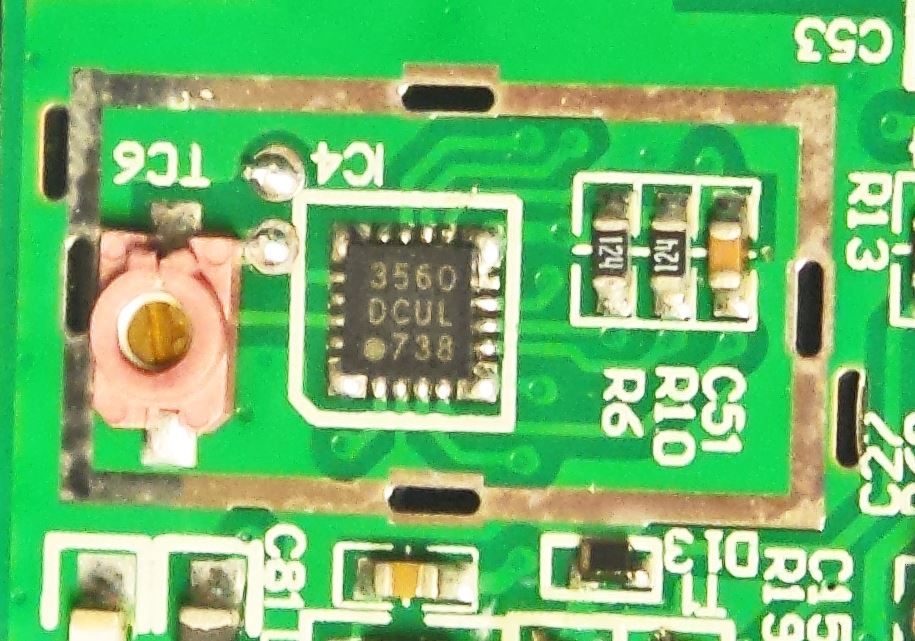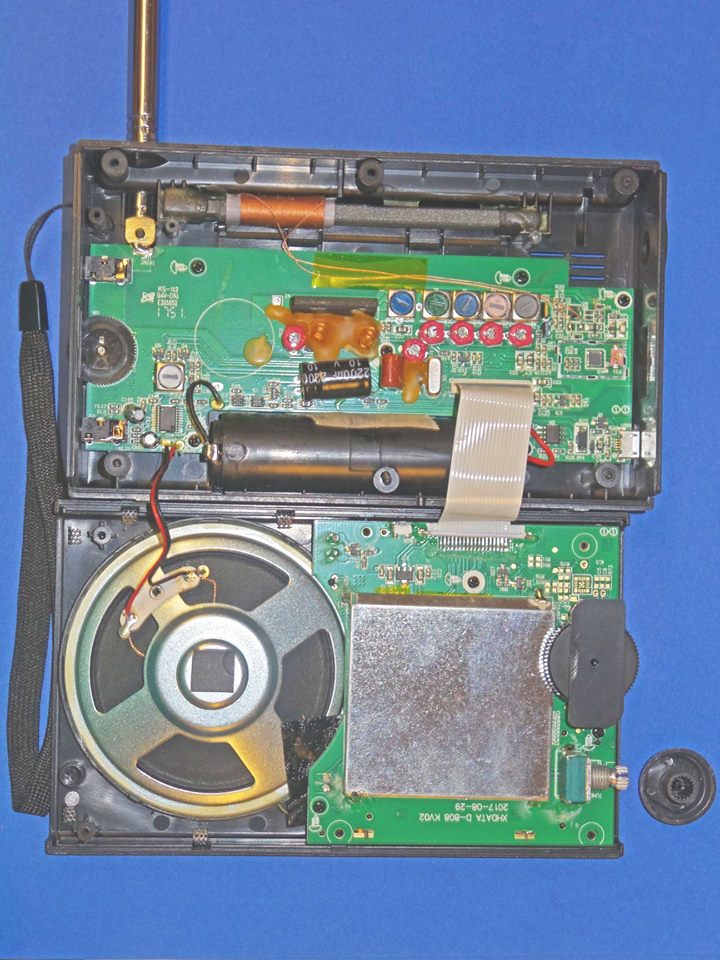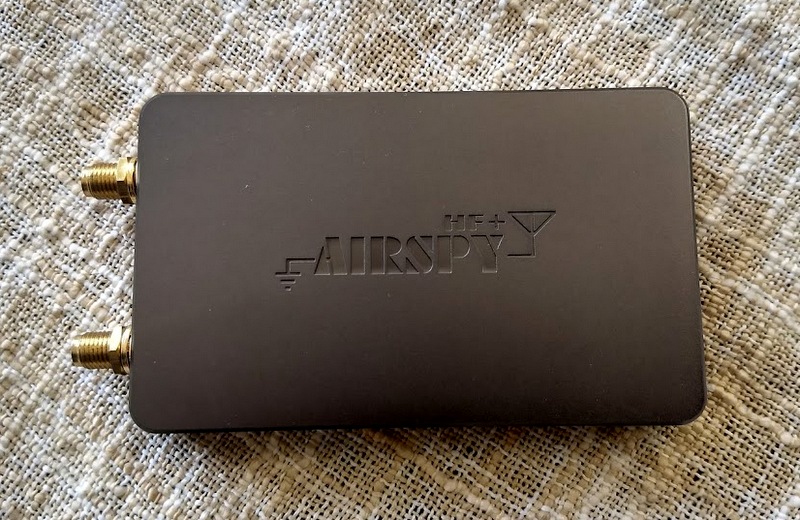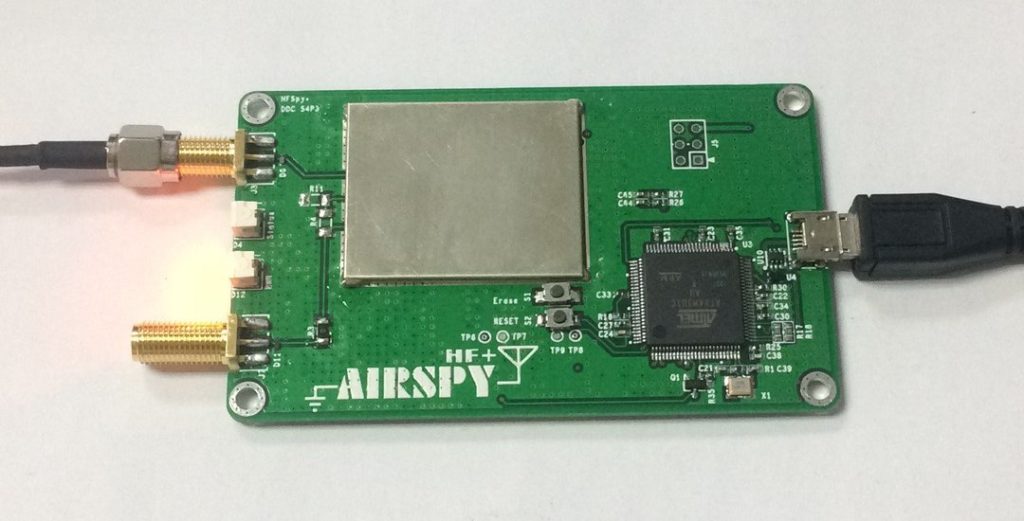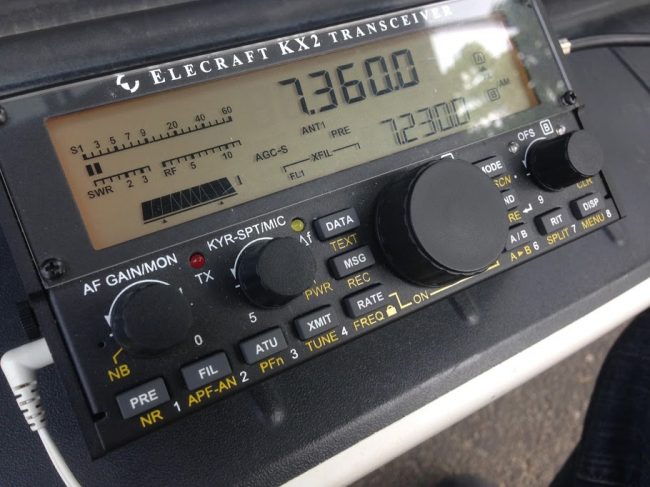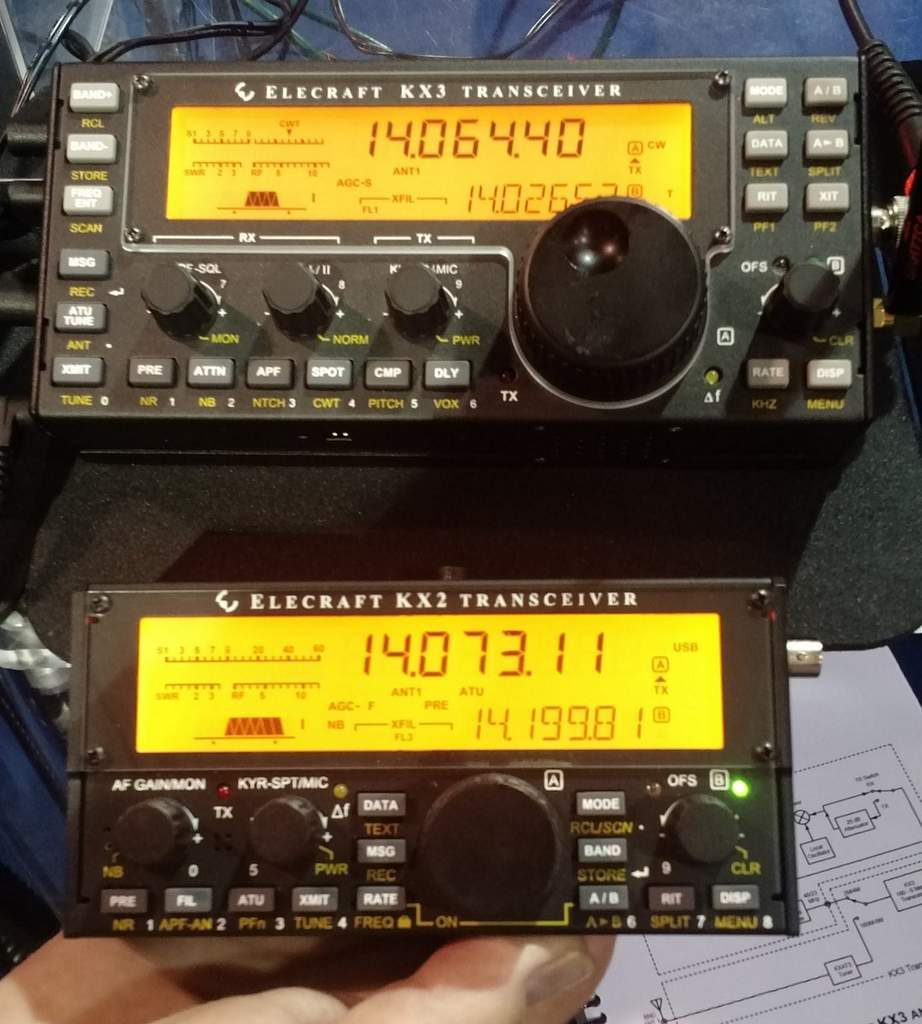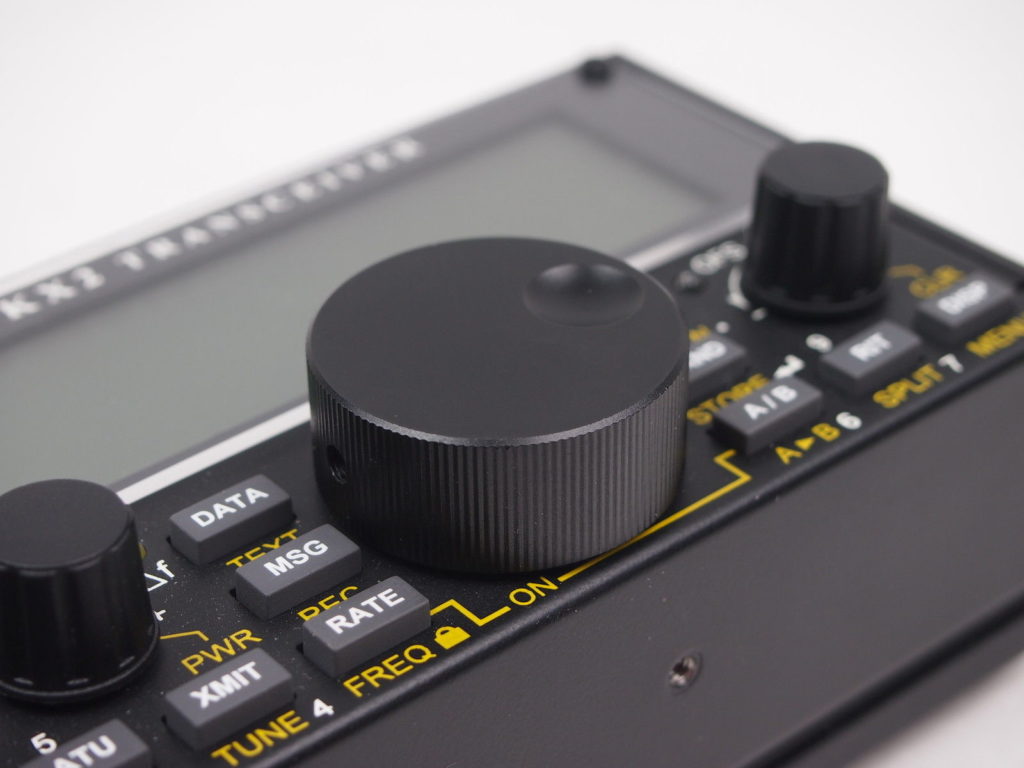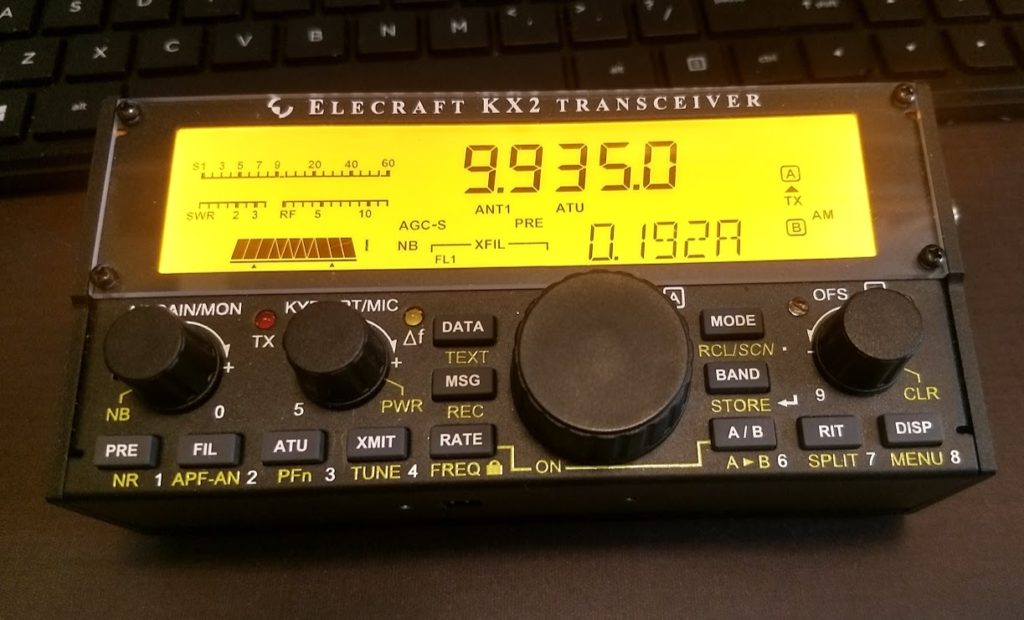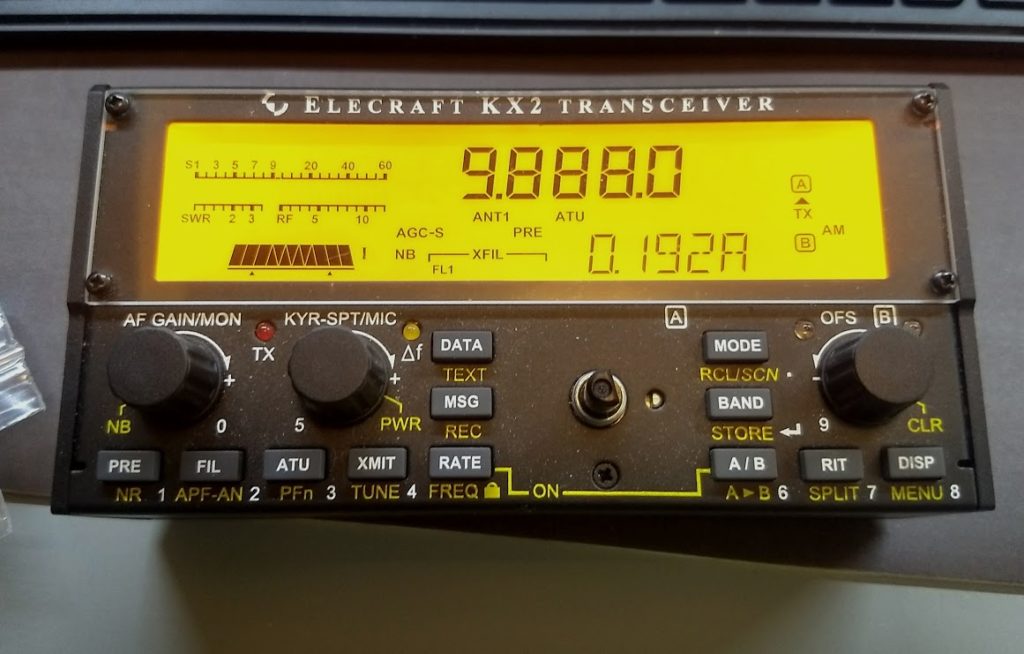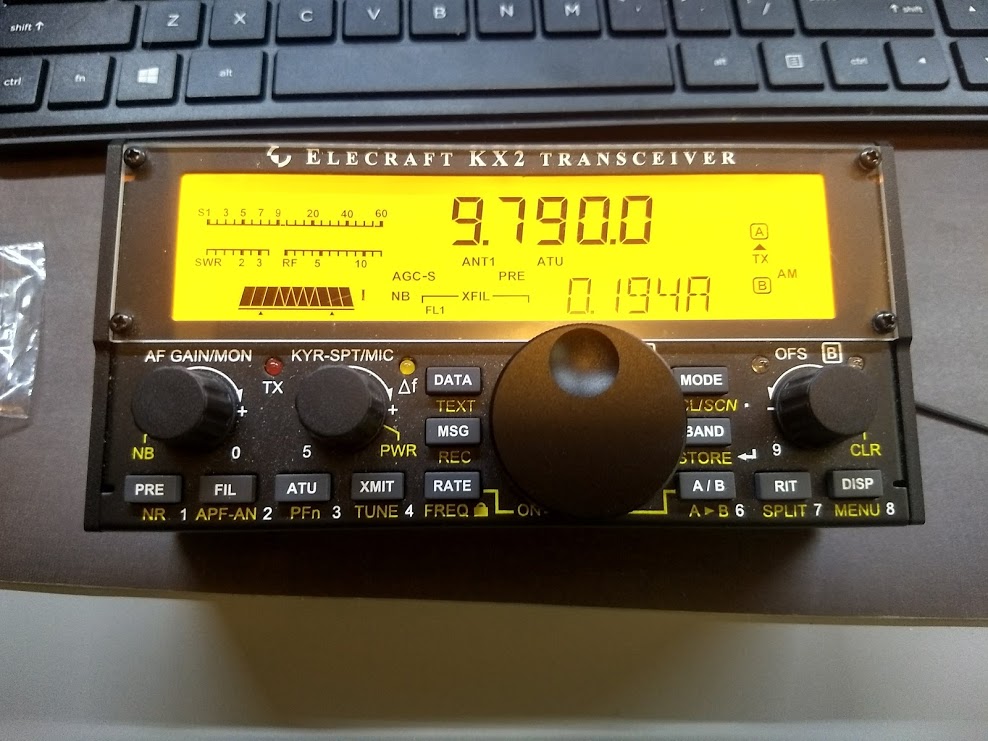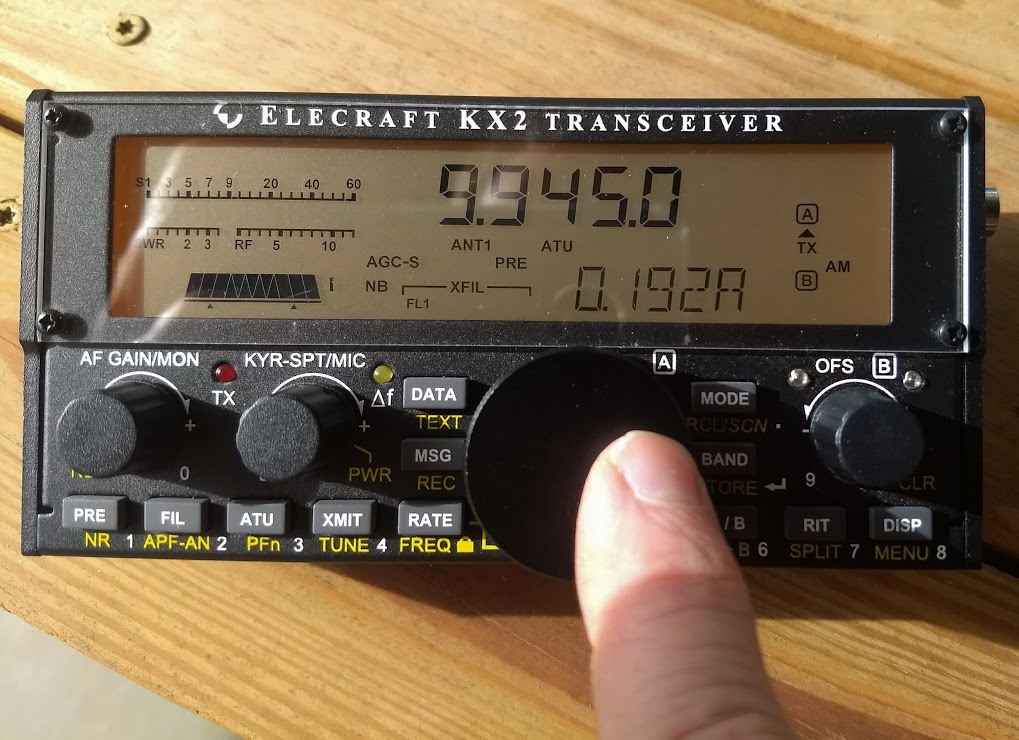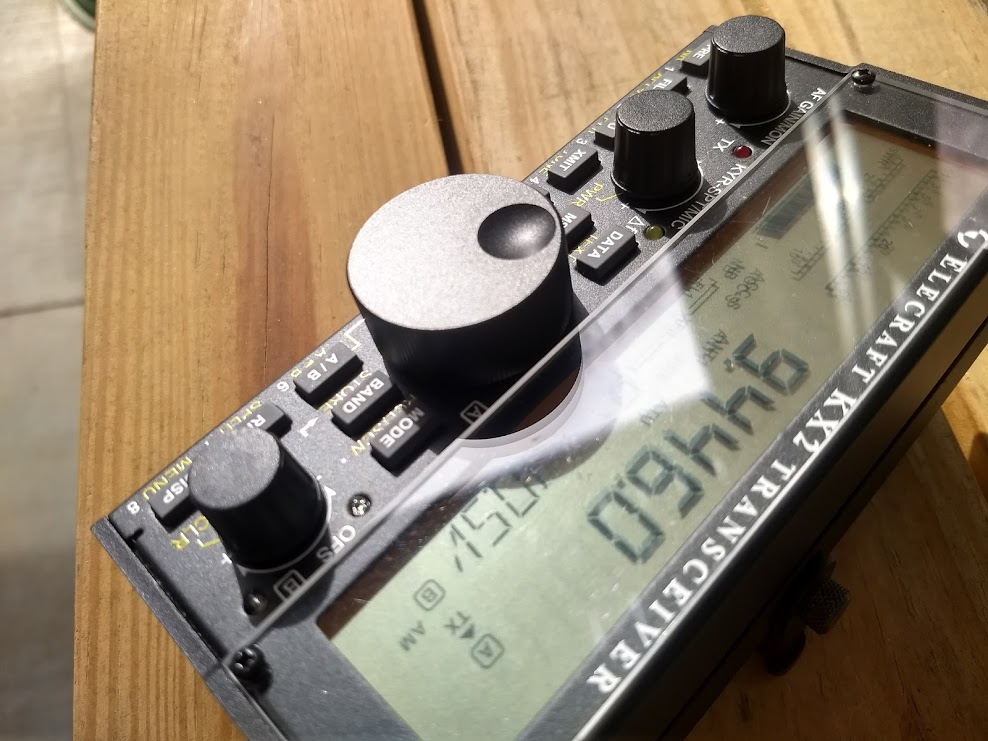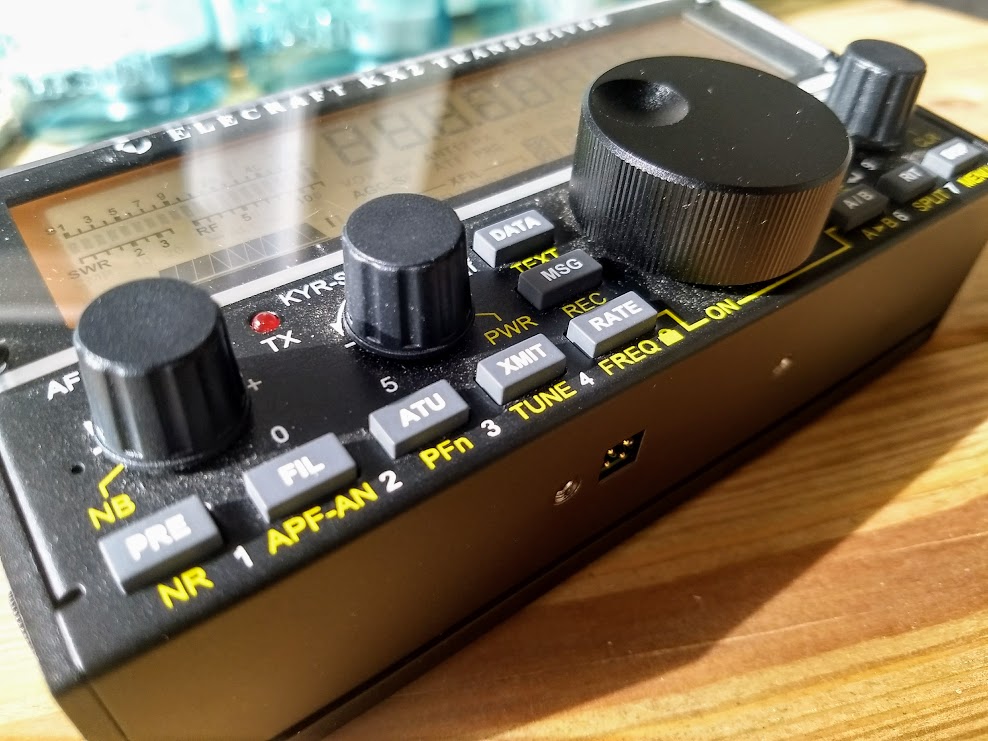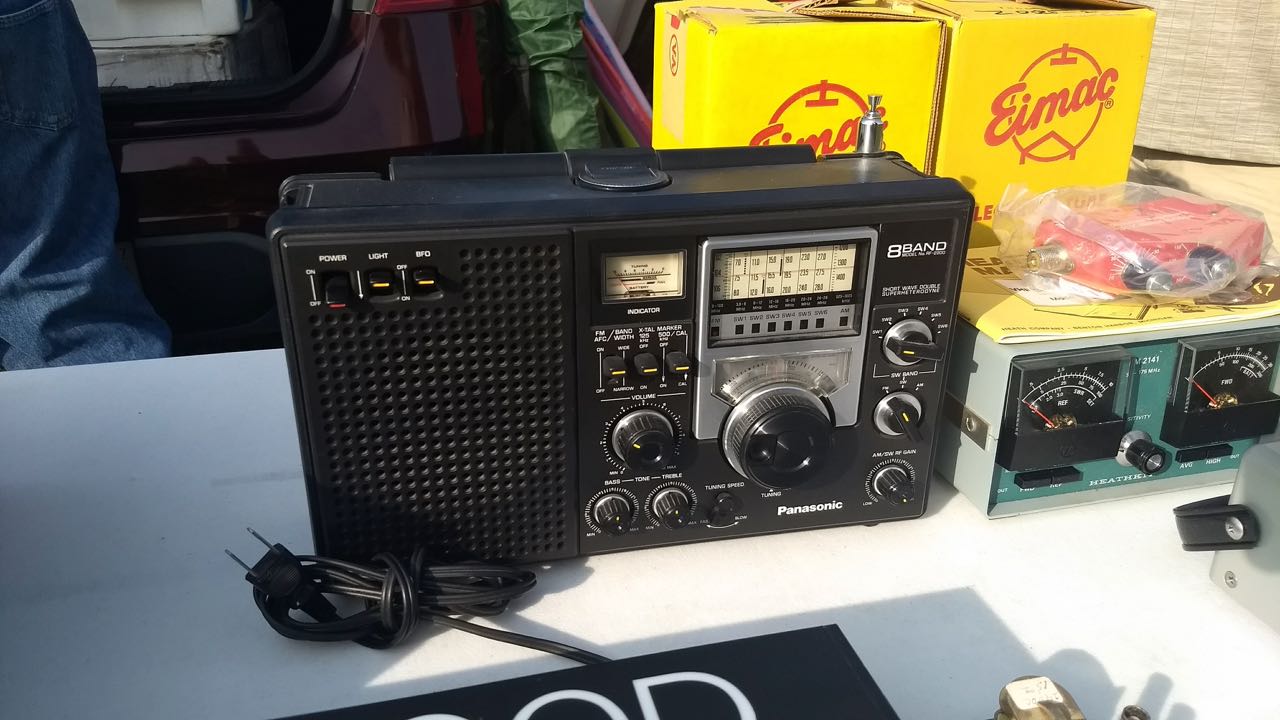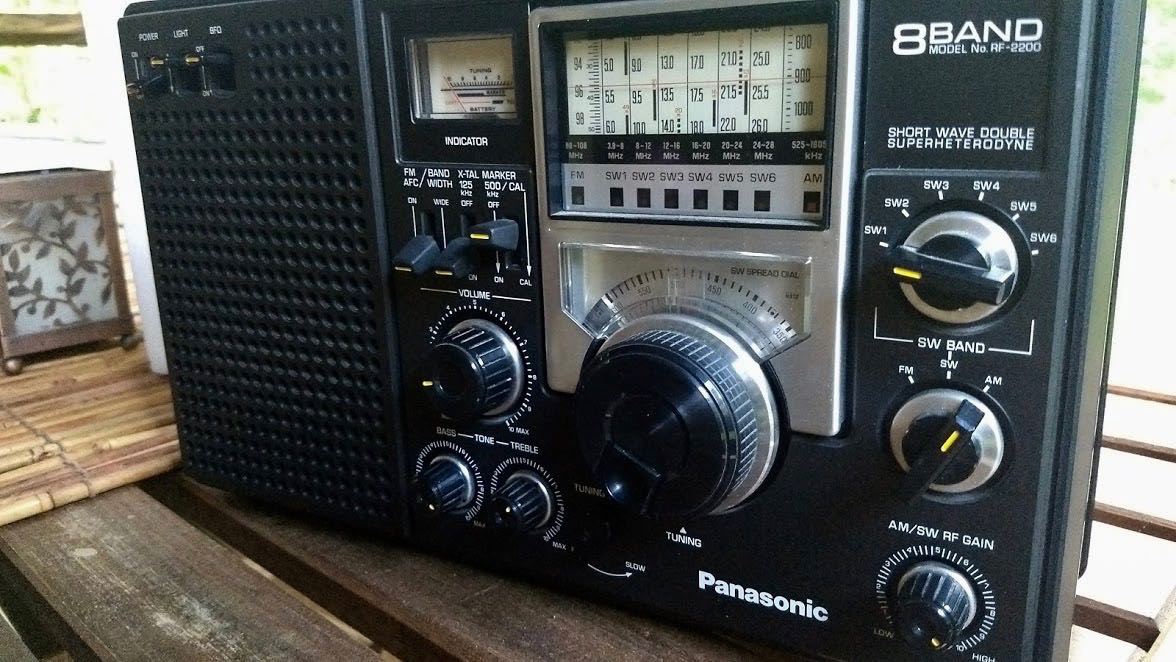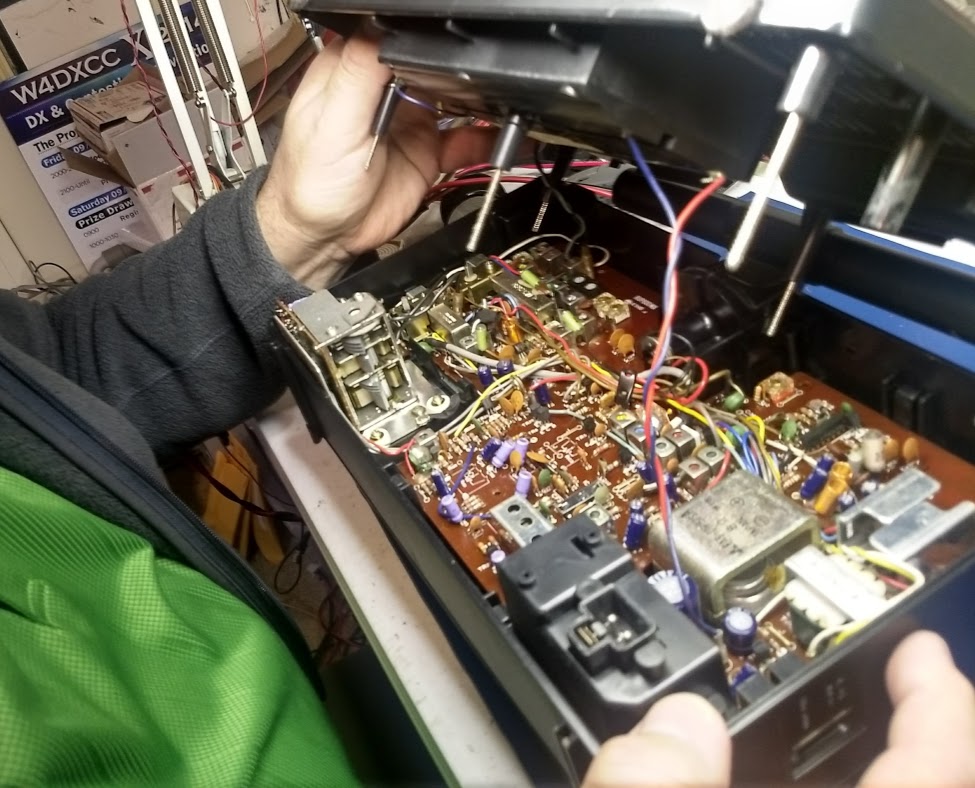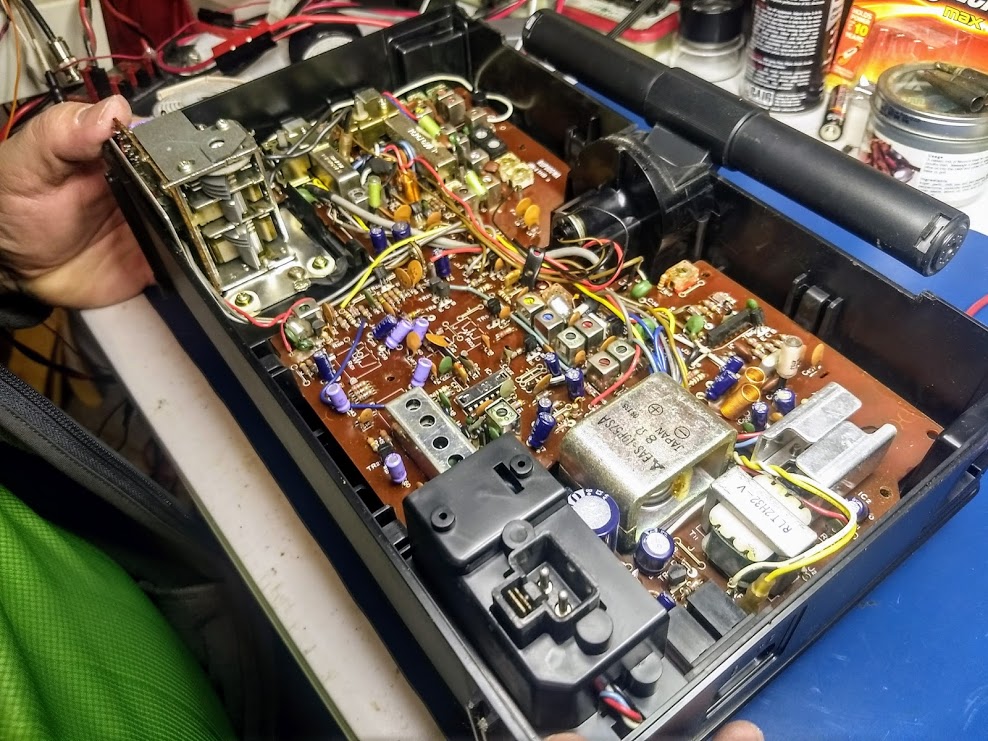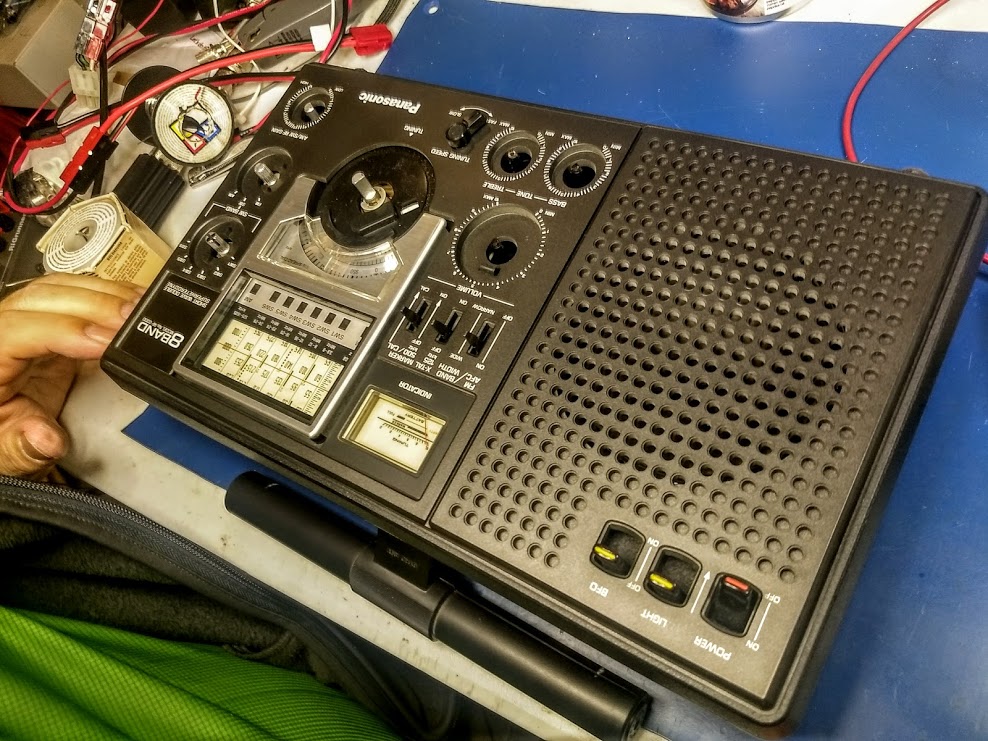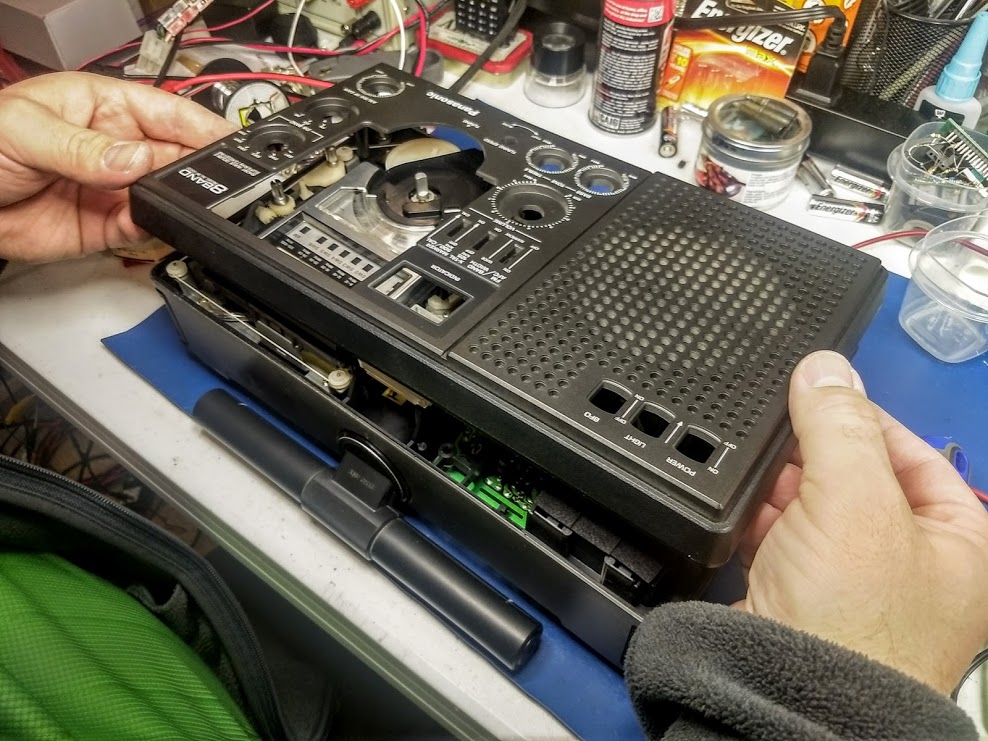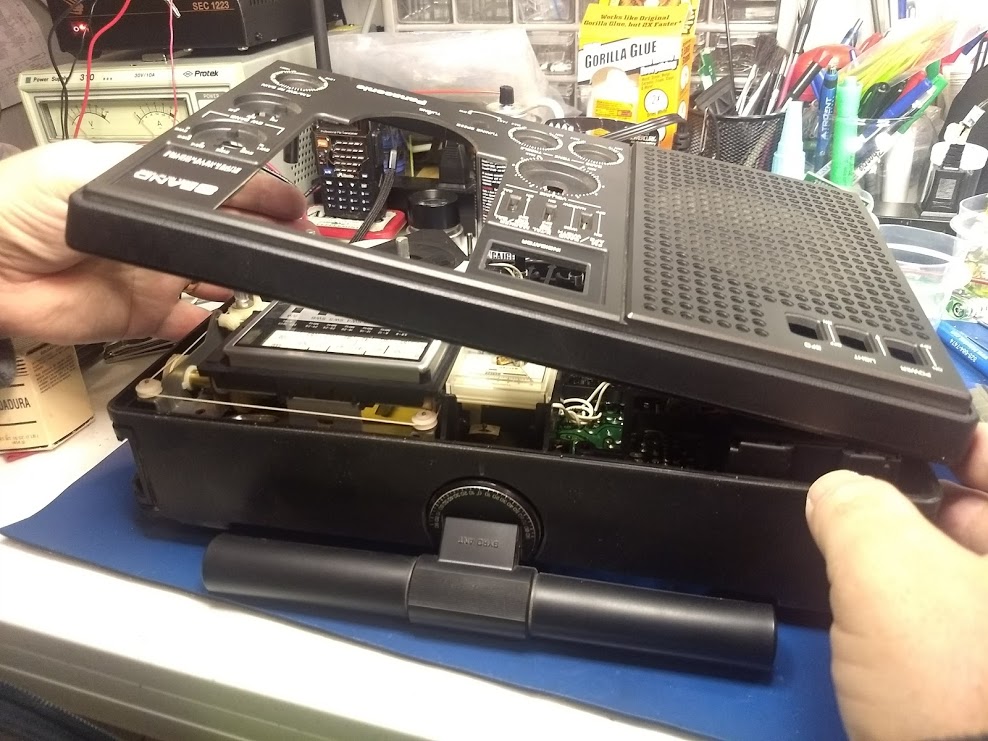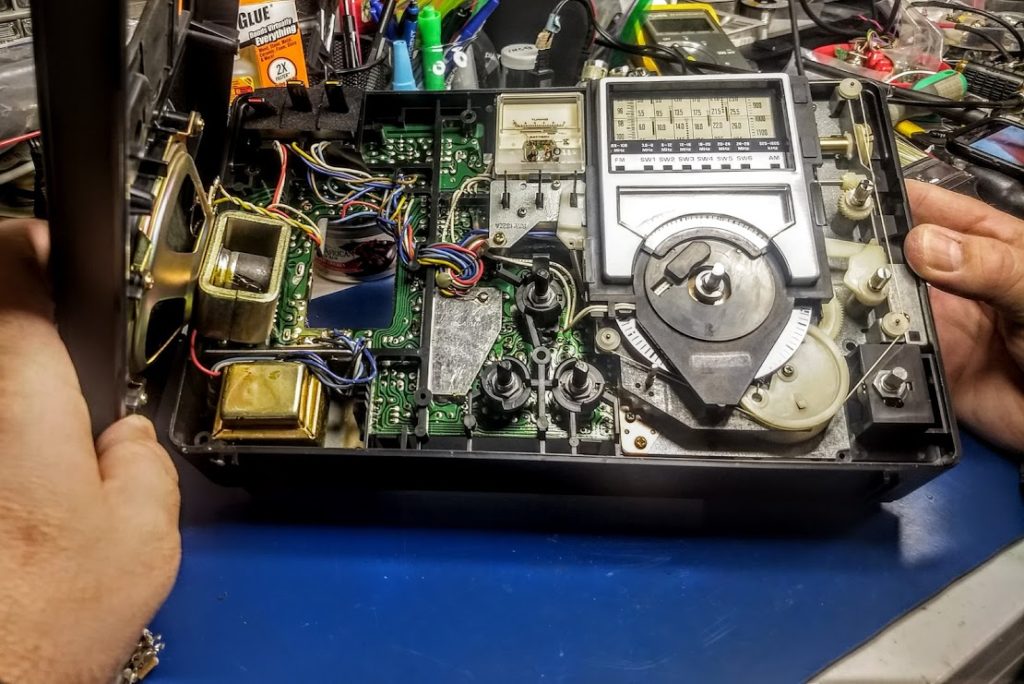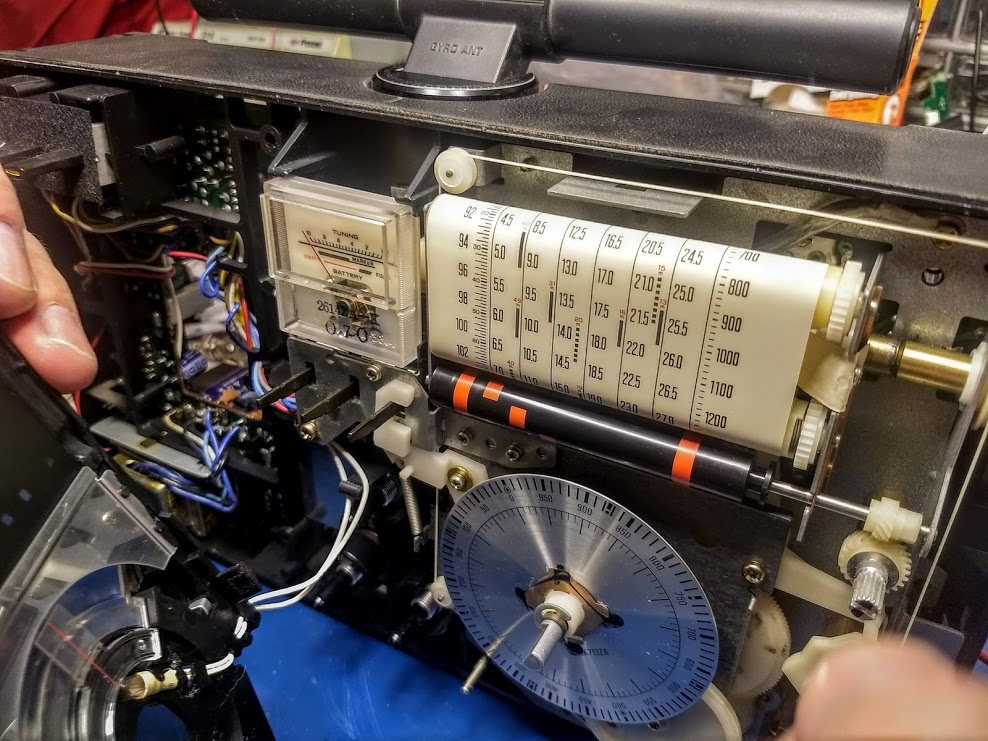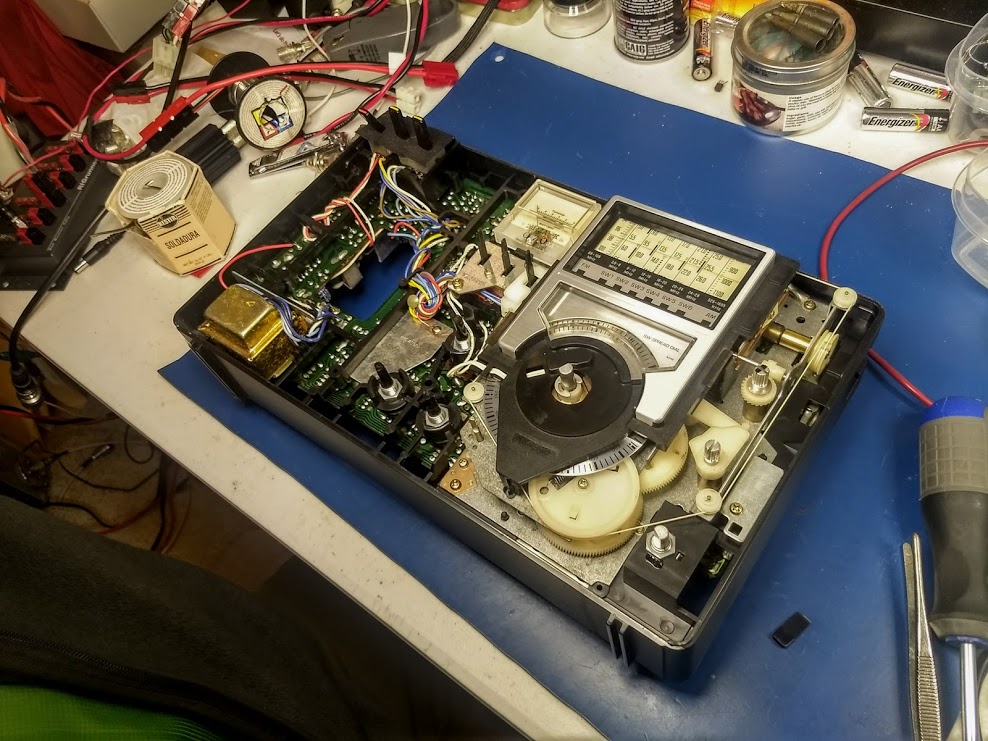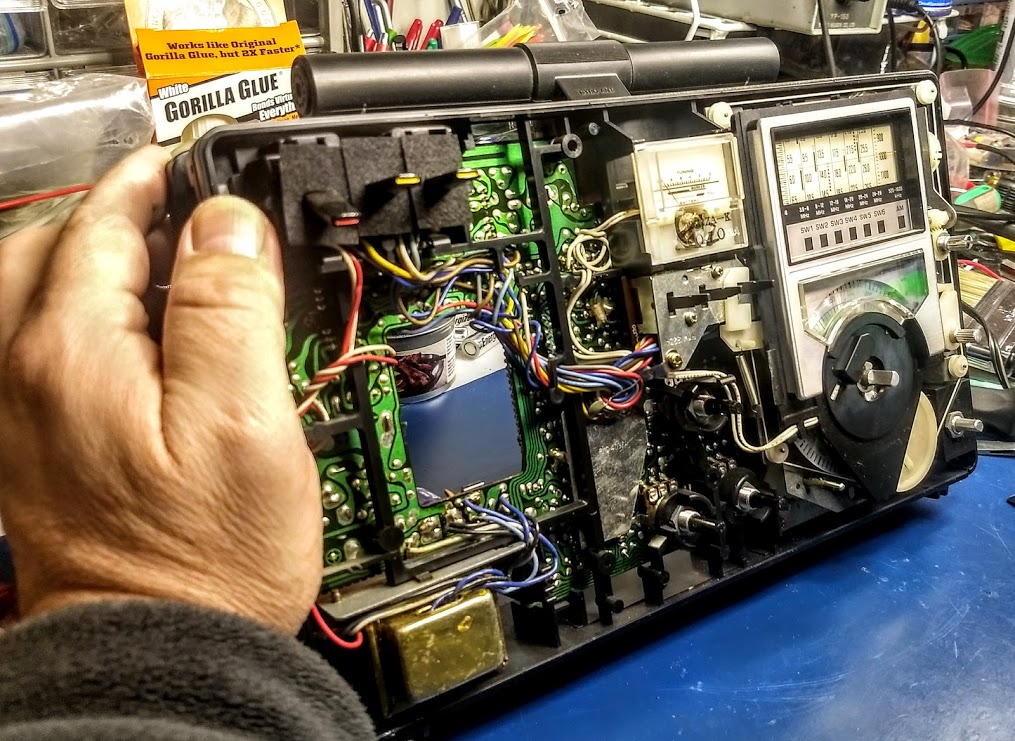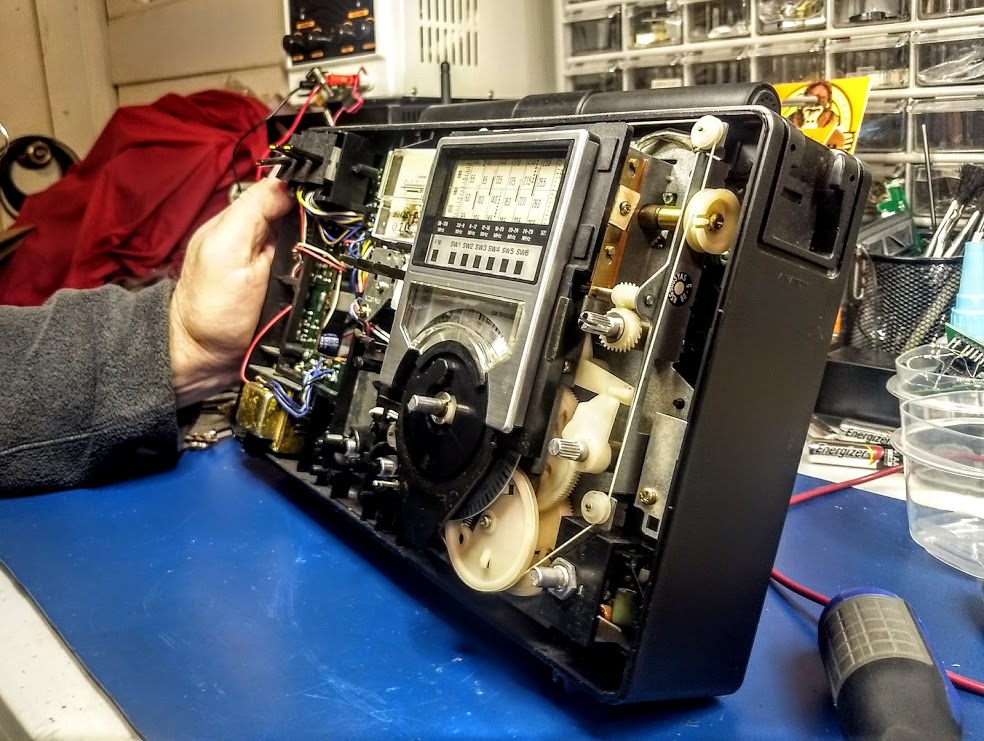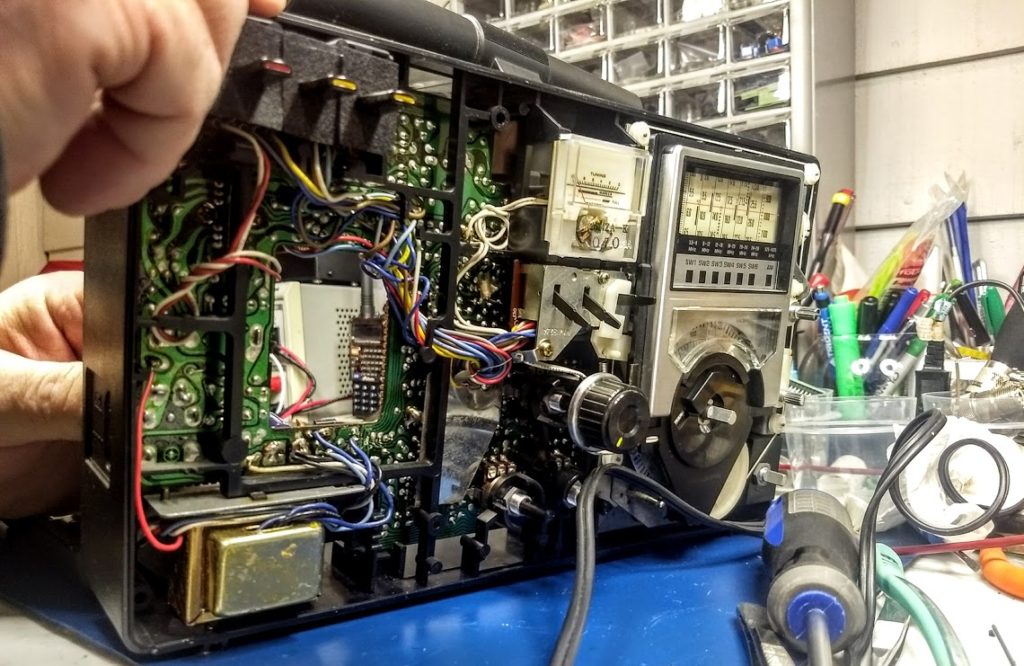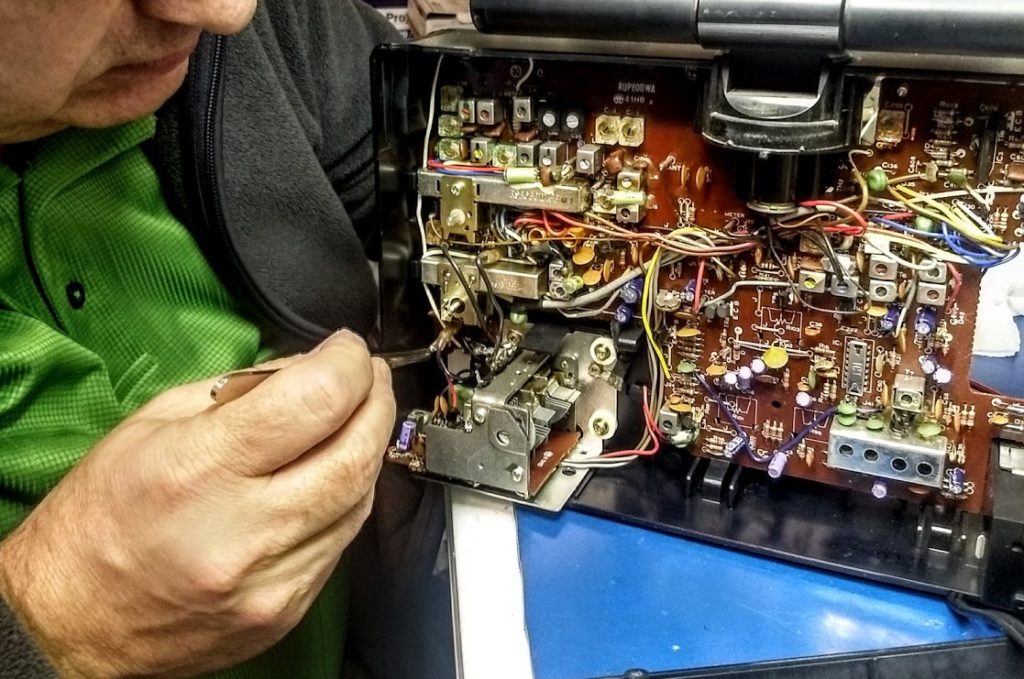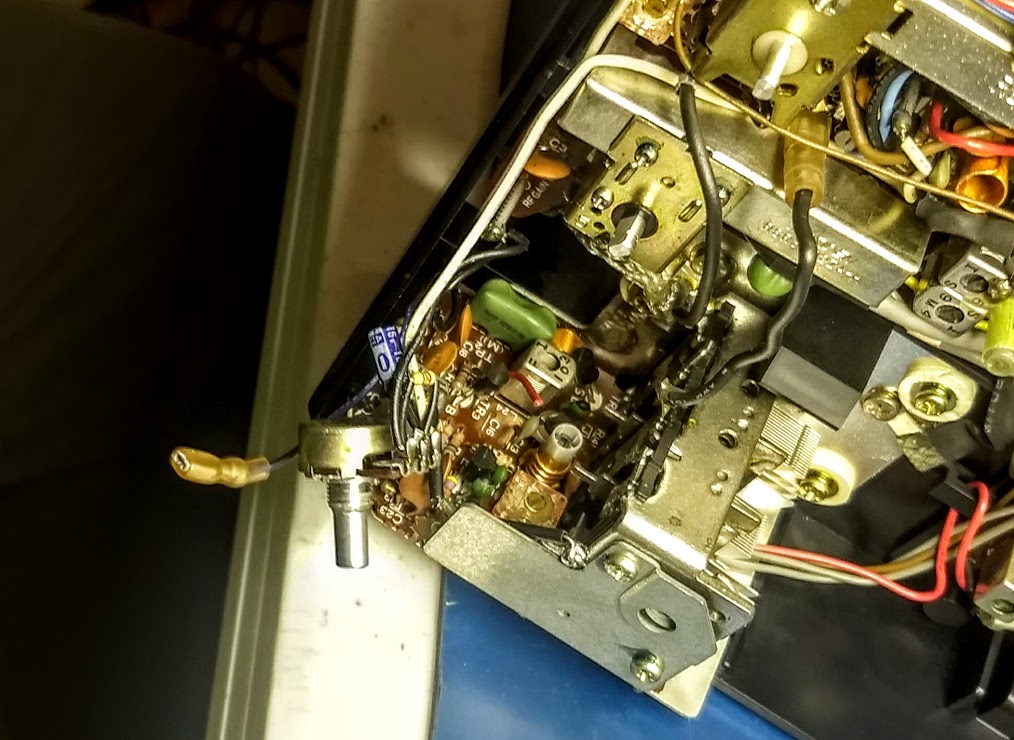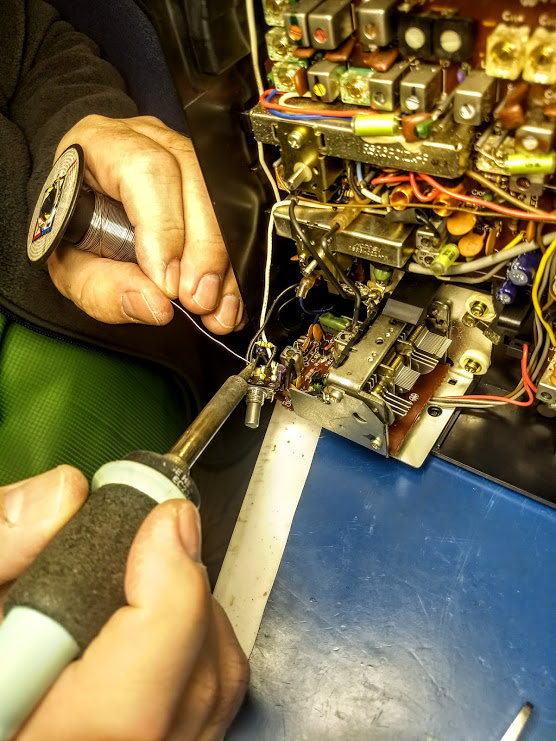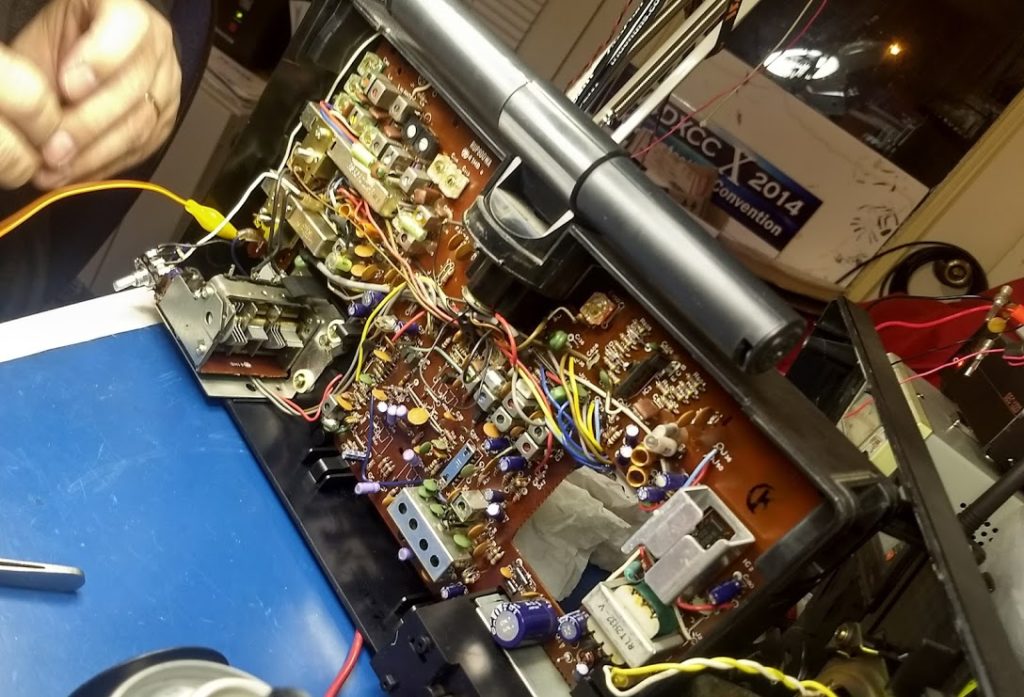Many thanks to SWLing Post contributor, TomL, who shares the following guest post:
Stupid Radio Trick – DSP “Hi-Fi”
by TomL
If you can remember the 1960’s, there was an audiophile rage going on called Hi-Fi. The base unit consisted of a ponderous piece of furniture consisting of a rectangular cabinet and equally large mellow sounding speaker of fairly smooth frequency response, say in the range of around 40 – 15000 Hz. They would have a built-in radio (using vacuum tubes) with large analog scale. Most would also have a “record player” embedded on the top to spin some vinyl discs (78 or 33 rpm).
For pedestrian consumers, it became a decision of how to keep up with the Joneses, so-to-speak. And that meant a trip to Sears to look at the latest offerings. When the decision finally came to purchase, of course no one could buy it outright. So, to add to the suspense, one had to put money down on “Lay-A-Way” plan that did not allow you to take possession of your prized choice until the last monthly payment! One had to visit or mail in a check every month.
So where am I going with all this? Well, as you can see from the photo [above], I have purchased three portable radios for three very different purposes. All three were painstakingly studied and reviewed and weighed against all other possible choices. All are highly rated by the usual reviewers like RadioJayallen, SWLing Blog readers and other internet personalities. The Sangean is for home use and listening to baseball games when I did not want to fire up the stereo hooked up to the Grundig Satellit 800. The small Sony ICF-19 is a phenomenal knock around radio for the car and listening while out to lunch or a walk in the park. The large Tecsun S-8800 is a possible replacement for my ailing 20+ year old Sony ICF-2010 for shortwave use.
Well, I was tired of listening to any one of them in terms of sound quality. The Sangean has too much upper bass/lower mid range, the small Sony is very carefully maximized for total speech clarity, and the Tecsun seems to lack a little in the mid range frequencies (compared to highs and lows). Staring at them, I thought to self, “What if I turn on the Sangean and Sony together???” What ensued was a revelatory sonic experience (it sounded pretty good)! One seemed to fill in the other in certain ways. But it was not perfect.
Duh, I had the new Tecsun in a carry case while trying to decide if I send it back for a tuning quirk and dug it out and plopped it on top. Turning it on, I heard more lows and highs, just like a Field Radio should have but with the mid range filled in! After very careful volume adjustment, I now have something that could rightly be called DSP Hi-Fi. At least, that is what I am calling it for now. ?
Violin and piano pop-out of an orchestra but not too harsh sounding. Rock & Roll sounds loud and punchy without that boombox effect. Bass lows are there (could be better, now all I need is a small subwoofer connected to the Tecsun line-out ???). Highs are there too but well controlled. Mid range voice clarity is stunning, as if someone is in the room with me but not sounding too forward! It is not room-filling but acts more like a near-field monitor. I like that I can line-up the speakers over each other.
The really fortunate thing is that all three radios have complete DSP for FM and receive my favorite over-the-horizon station with very similar reception quality. Also, they process DSP with a similar delay before output to its respective speaker. The sound is fairly coherent and even though it is still mono output, the full range of musical fidelity can be appreciated better. It is not audiophile quality but it is very satisfying and I can actually hear more details in the music than with any one of the radios by themselves. Just goes to show you that you CAN teach a new Radio dog old Tricks (LOL)!
Happy Listening,
TomL
I love it, Tom! Thanks for pointing out that sometimes it takes a “stupid radio trick” to really produce some amazing audio fidelity! This reminds me that in the early 90s, I used to have a Zenith Transoceanic and RadioShack DX-440 on my radio table in my room. If I recall correctly, the Zenith was on my left and the DX-440 on the right. I used to tune to shortwave, MW and FM stations and produce a makeshift “stereo” effect by playing both at the same time. Sometimes, on shortwave, it actually helped me discern voices in weak signal work!
Thanks again, Tom!

